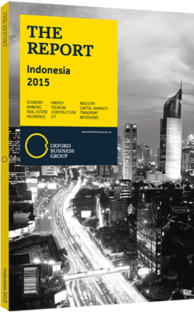Rinaldi Mudahar, President-Director, Prudential Indonesia: Interview

Interview: Rinaldi Mudahar
How do you assess the overall development of Indonesia’s life insurance sector?
RINALDI MUDAHAR: Indonesia has shown strong growth and stability in recent years, and the development of the insurance industry tends to follow this trend. In fact, the sector is becoming an important foundation of support for Indonesia's overall economic growth, because it provides long-term protection for families and enables the achievement of their financial goals.
Additionally, the insurance industry contributes to the acceleration of Indonesia’s economic expansion with substantial investments into a wide variety of sectors. The opportunities for growth in the insurance sector are currently being driven by the growing purchasing power of the Indonesian middle class. A study launched by the Boston Consulting Group in 2013 estimated that Indonesia’s middle and affluent classes would rapidly expand from 74m people in 2012 to an estimated 141m by 2020. However, today Indonesia ranks far behind other countries in the region with only around 5% of Indonesia’s 250m are protected by individual life insurance. This shows that there are huge opportunities for insurance growth in the country and for developing better insurance and protection services.
To what extent is an agent-based approach more suitable for Indonesia’s insurance sector?
MUDAHAR: The agent-based approach enables the wider population of Indonesia to have an initial, face-to-face contact when entering the insurance world. The human factor is essential in allowing a more effective communication process with clients. Agents can continuously educate the market on the importance of life insurance and what life insurance can do to help them with their financial planning, and it is imperative for Indonesia that insurance products continue to be explained well, ideally face-to-face, to ensure that consumer’s fully understand the benefits of being insured and that products meet their needs. Agents will therefore continue to play a role in furthering the industry.
How would you describe the reach of insurance products in the lower-to-middle income segment?
MUDAHAR: Life insurance penetration in Indonesia is only around 2% of GDP, because few Indonesians are aware of insurance and many do not have access to insurance services. This is, in part, due to a lack of financial resources, particularly for the lower-middle income segment, though it is primarily due to a general lack of understanding of the benefits of life insurance.
In some cases, cultural aspects also play a role, as local communities tend to be heavily involved in helping people within their communities. Educating the market to enhance awareness of the crucial role life insurance plays, as well as enabling access for more people to long-term protection, will be key to future growth. Although immediate results are not expected overnight, it is good to raise awareness and to set goals to reach more of the population. Currently there are huge opportunities for promoting a more holistic culture of insurance provision among lower-to-middle income markets.
What new distribution channels could help aid the sector’s continued growth into the future?
MUDAHAR: To develop a life insurance culture in Indonesia we must first target those who have never experienced its benefits. Generally, people approach life insurance through their peers, friends and family, and through the media. While friends’ testimonies can support the sector, there is room for digital growth that can socialise the importance of insurance and potentially act as a prominent distribution channel, as people become increasingly comfortable with online education and marketing. The life insurance industry needs to provide quality services. In this regard, it is important that Indonesians have access to insurance expertise they can trust. Building trust is a key strategy for forging relationships with people, particularly youth. Indonesia’s young, highly educated population represents an exciting opportunity for insurers and for the future development of the sector’s sophistication.
You have reached the limit of premium articles you can view for free.
Choose from the options below to purchase print or digital editions of our Reports. You can also purchase a website subscription giving you unlimited access to all of our Reports online for 12 months.
If you have already purchased this Report or have a website subscription, please login to continue.

